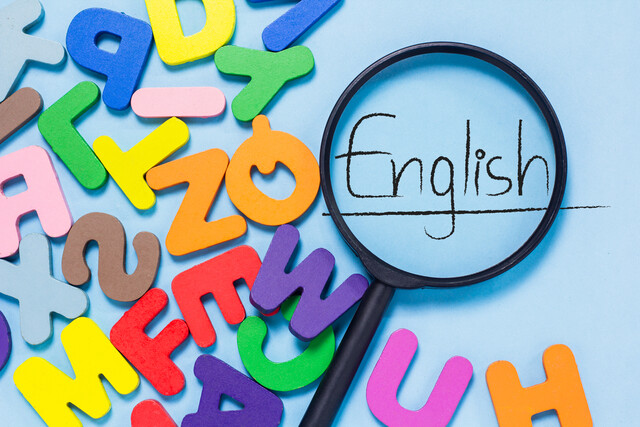Literacy Importance: Reading Basics
Introduction
Reading is an essential part of communicating with others. Unfortunately, because of the vast popularity of computers and Internet usage, Americans aren't reading as much as they used to. Because of this, reading and thinking skills are in danger of decreasing to the point where it affects work and communication within business environments. Understanding the importance of reading, and comprehending what is being read, relies on adequate vocabulary, understanding of words and sentence structure, as well as a basic knowledge of English grammar and usage. This article will introduce students to the reading basics and to the importance of literacy in today's society.
Literacy in America - The Good, the Bad, and the Ugly
A recent study by the National Commission on Adult Literacy has determined that more than 88 million American adults lack an ability to speak and understand proper English. The study also found that an alarming number of those adults do not have a high school diploma, or have not completed education beyond the high school level. What does that mean? It means that today's workers must overcome educational obstacles in order to enhance job experience and capabilities, career opportunities, promotions and advancements in all major industries.
Unfortunately, the same study by the National Commission on Adult Literacy also has determined that funding for reading programs has slowed to a trickle, compared to educational funding in the past. Literacy and summer reading programs for children in local libraries and schools continue the fight against illiteracy, but strides for adults are sadly lacking.
The alarming statistics don't stop there. The National Coalition for Literacy also completed a recent study that determined more than 11 million adults in the United States, or about one in 20, have such poor English skills that reading a newspaper is difficult. What accounts for such high numbers of illiteracy? While a great number of those statistics belong to recent immigrants who have not yet attained or mastered adequate English-speaking skills, nearly 20 percent are native American English speakers who are unable to comprehend much of what they are reading in their daily lives.
In 1992, National Assessment of Adult Literacy studies estimated that roughly 14 percent -- or 30 million adults -- were at "below basic" reading and writing skills. While native-born Americans, as well as Asian and Hispanic immigrants have improved in some aspects of reading and writing comprehension, the figures of the estimated 11 million adults who can't read, write, or speak English places an enormous burden on socioeconomic environments.
Such statistics do not merely relate to the inability to read English as a second language (ESL), but the ability to comprehend and to interpret what is being read. Efforts to improve reading skills in America have focused on the adult population, but another alarming trend has become apparent.
According to a study recently released by the National Endowment for the Arts, Americans are reading a lot less than they used to. The study collected data on the amount of reading both children and adults engage in on a daily basis. Among the results are the following statistics:
- Young Americans spend an average of two hours a day watching television, but only seven minutes a day reading.
- Reading scores for American adults have decreased by nearly 20 percent.
- Only 50 percent of American college-age students read books voluntarily.
- American teenagers rank behind countries such as Korea, France, Canada, and Poland in average reading scores.
- Fewer Americans are spending money on book purchases than ever before.
Use of the Internet and computers for entertainment has soared, engaging young and active minds in visual stimulation rather than cognitive functions, such as reading and puzzle solving.
Why Are Reading Skills Important?
There is nothing quite so frustrating as the inability to communicate with others. While many people are perfectly content to communicate verbally, imagine how it feels to walk down a street and not be able to read store signs or street directions. If there were no windows, how would you know whether that storefront belongs to a pharmacy or a toy store?
Visits to doctors, banks, schools, and other places of business become a challenging experience for those who don't know how to read properly. Reading skills are essential for optimal communication between cultures and industries.
Without adequate reading skills, everyday events prove difficult. Even if you manage a visit to the doctor's office, how would you follow instructions for medications if you can't read them properly? How do you understand that the memo that your employer just sent you explains that your health benefits will be decreased if you don't respond with a new plan choice within a certain period of time? Reading skills and comprehension are an essential part of many workplace environments.
We're not going to ignore the popularity and benefit of using the Internet to improve your reading skills: resources and links to various Internet sources that provide global interaction in the form of blogging, discussion and forum boards, and interactive games that will help to improve vocabulary, comprehension, and reading skills.
Adults who take it upon themselves to learn, speak and better understand English will encourage competition, a healthier economy, and a more well-rounded social and civic life. Whether you are a native English speaker or an immigrant from another country, getting the most from your adopted language will help to increase job opportunities, comprehension, and the ability to interact and engage in your everyday environments without fear of embarrassment.
Conclusion
This reading basics course is designed for anyone who wishes to improve his or her reading skills and comprehension levels. Whether you're an adult learning English as a second language, or a student wishing to improve communication skills in everyday or business environments, we will help provide basics to reach your personal and professional goals.
Introduction
There is so much more to reading than merely being able to identify words on a page. Reading involves thinking and interpreting -- processes known as comprehension. Reading comprehension, therefore, is the understanding, as well as the interpretation, of what is read in any document, book, newspaper, or other printed matter. In order to accurately understand the written word, individuals must be able to make connections between what is read and what is known, to be able to think about what has been read, and to interpret what has been read.
Vocabulary strength and knowledge is a great part of this process, but many readers have difficulty understanding the process of reading in a variety of situations and needs. This section will cover the basics of comprehension -- some problems, solutions, and how to improve reading for clarity in all situations.
Problems in Comprehending
Many students of English have difficulty understanding the written word. This may happen for a multitude of reasons. Reasons may range from a dislike of reading, to an inability to focus or pick up on relative and important information in any written passage. For example, some problems in reading may include, but are not limited to:
- An inability to understand important parts of books, articles, or documents
- An inability to create images that correspond to what is being read
- An inability to understand the focus or thrust of an article, a book, or a document
In such situations, a person may not be able to even summarize a passage, a document, or a portion of a book. For example, an individual might be able to give you the general idea of what is happening, but can't explain why or how.
This inability to focus on important aspects of a passage leads to difficulties in comprehension. One of the major causes of this inability to understand is a lack of adequate vocabulary. It may also be caused by an inability to pick out a clear and logical sequence of events, or the ability to pick out and focus on key facts contained within informational texts.
In such situations, it is helpful to re-read confusing sections in order to gain greater understanding of what is being said. Many adults, children, and English as Second Language (ESL) students take notes while reading. They also mark or take notes of vocabulary or sentence structures that they may not understand in order to go back over them for clarity at a later point in time.
Different reading scenarios require different reading techniques. For example, reading a Reader's Digest article is completely different from reading an informational document on finances. Reading a medical report requires different skills and vocabulary than reading a book for pleasure. Because of this, it is important for students to understand the different types of reading scenarios that may be necessary for school, home and work environments.
Different Reading Scenarios
Generally, three different types of reading scenarios are required of individuals throughout their daily activities. These may include:
- Narrative reading
- Journalistic reading
- Textbook reading
Each of the above listed reading scenarios will require a different approach or strategy in order to understand the focus of a document or reading materials. Each type of writing structure requires a different style, vocabulary, and tone. Depending on the type of writing in a document, book, or other piece of printed matter, the reader will be required to identify important points in order to comprehend the focus of the writing.
Textbook reading generally involves a greater ability to understand terminology and vocabulary, as well as the ability to break down and decipher longer sentence structures. Textbook reading generally takes a little bit longer than other types of reading. Some types of textbook writing may be found in history, science, math, or English textbooks. These types of books often require memorization skills, as well as a mastery of vocabulary in specific fields or areas.
Newspaper and magazine articles are an example ofjournalistic writing. In most cases, magazines and newspapers take a specific approach to a topic or idea. Many magazine and newspaper articles are written in forms of opinion or in a conversational tone that is written in the third person. For example, "he did this," or "she did that." Generally, newspaper and magazine articles are not as difficult to read as textbook passages, because the vocabulary and sentence structure is not so difficult or lengthy.
Journalistic reading generally requires a familiarity with the terminology and vocabulary in a specific area. While information found in newspapers, magazines, essays, or memos are important for knowledge, or for day-to-day work environments, the information contained in such documents generally doesn't need to be memorized.
Narrative reading involves reading diaries, books, and short stories. Narrative writing involves the use of dialogue and description that prompts imagery, clearly identified characters, as well as actions that various characters take. This type of reading is considered the easiest, as it involves the utilization of simple vocabulary and sentence structures.
Narrative reading that involves the reading of fiction, as well as personal or narrative histories and documents, requires a basic understanding and familiarity with a wide range of vocabulary and sentence structures.
When reading any type of passage, readers should ask themselves a variety of questions that include, but are not limited to:
- Who or what is this passage about?
- What am I expected to get out of reading this passage?
- Is there data or information that I will be expected to remember?
Remember that the type of document or written material will determine the approach that you take to reading it. For example, your expectations of what you may find in the pages of a novel will be completely different from the information you may expect to find in a handful of financial documents. In addition, your ability to comprehend may very well be determined by your needs for reading the document in the first place. For example, your approach to reading a favorite short story or poem may be a lot more open than your approach to reading the rules and regulations required in a home loan financial document.
In this respect, attitude often plays a large role in the ability of a reader to comprehend written materials. Feeling intimidated, or dreading the information contained in a document, may hamper the ability of a reader to comprehend and absorb information or data contained in that document. An open approach to reading often provides benefits, such as greater understanding of vocabulary, clarity, and the ability to decipher what is contained in the written word.
Conclusion
Remember that you constantly need to adapt your approach to reading depending on the type of document that is being read or studied. In order to effectively understand what is being read, a student needs to ask him- or herself, which technique should be used in reading the materials, what kind of reading it is, and what he or she may need to "get," or comprehend, from the document. Reading scenarios will constantly change in daily environments, from materials that are read for pleasure, to informational materials received in the mail or through work, as well as the necessity to read materials in workplace environments that may include instructions or goals.
























